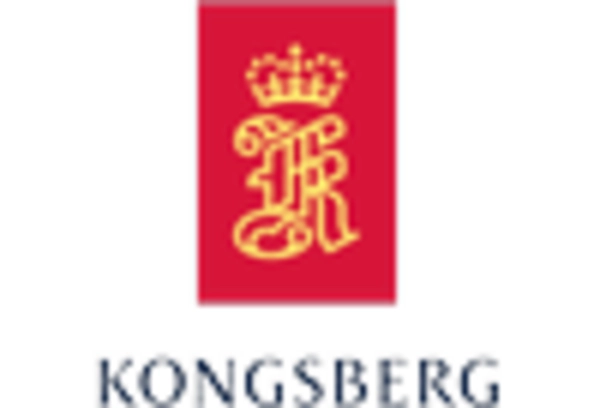Increased Defense Spending
The unmanned sea-system market is experiencing a notable surge in demand due to increased defense spending by the US government. With a focus on enhancing maritime security and surveillance capabilities, the Department of Defense has allocated substantial budgets for the development and procurement of unmanned systems. In 2025, defense spending is projected to reach approximately $800 billion, with a significant portion directed towards advanced technologies, including unmanned sea systems. This trend indicates a robust growth trajectory for the unmanned sea-system market, as military applications continue to drive innovation and investment in this sector.
Growing Commercial Applications
The unmanned sea-system market is witnessing a diversification of applications beyond military use, particularly in commercial sectors. Industries such as shipping, oil and gas, and environmental monitoring are increasingly adopting unmanned systems for tasks like underwater inspections, data collection, and logistics. The commercial segment is expected to account for over 40% of the market share by 2026, reflecting a growing recognition of the efficiency and cost-effectiveness of unmanned technologies. This shift towards commercial applications is likely to propel the unmanned sea-system market forward, as businesses seek to leverage these systems for operational advantages.
Enhanced Data Collection and Analysis
The unmanned sea-system market is benefiting from enhanced data collection and analysis capabilities, which are crucial for various applications. Unmanned systems equipped with advanced sensors and data processing technologies can gather vast amounts of information from marine environments, facilitating better decision-making in sectors such as fisheries, shipping, and research. The demand for real-time data and analytics is expected to grow, with the market for data-driven solutions projected to increase by 20% by 2027. This trend underscores the importance of data in optimizing operations and improving outcomes, thereby propelling the unmanned sea-system market forward.
Technological Integration and Innovation
The unmanned sea-system market is characterized by rapid technological integration and innovation, which is reshaping operational capabilities. Advancements in artificial intelligence, machine learning, and sensor technologies are enhancing the functionality of unmanned systems, enabling them to perform complex tasks autonomously. In 2025, the market is expected to grow at a CAGR of 15%, driven by these technological innovations. The integration of advanced communication systems and data analytics further enhances the operational efficiency of unmanned sea systems, making them indispensable tools in various sectors. This trend suggests a promising future for the unmanned sea-system market as technology continues to evolve.
Environmental Monitoring and Sustainability
The unmanned sea-system market is increasingly aligned with environmental monitoring and sustainability initiatives. As concerns over climate change and marine ecosystem health grow, there is a rising demand for unmanned systems capable of conducting environmental assessments and monitoring oceanographic conditions. The market for unmanned sea systems in environmental applications is projected to expand significantly, with estimates suggesting a growth rate of 12% annually. This focus on sustainability not only enhances the market's appeal but also positions unmanned systems as vital tools for addressing environmental challenges, thereby driving further investment and development in the sector.

















Leave a Comment